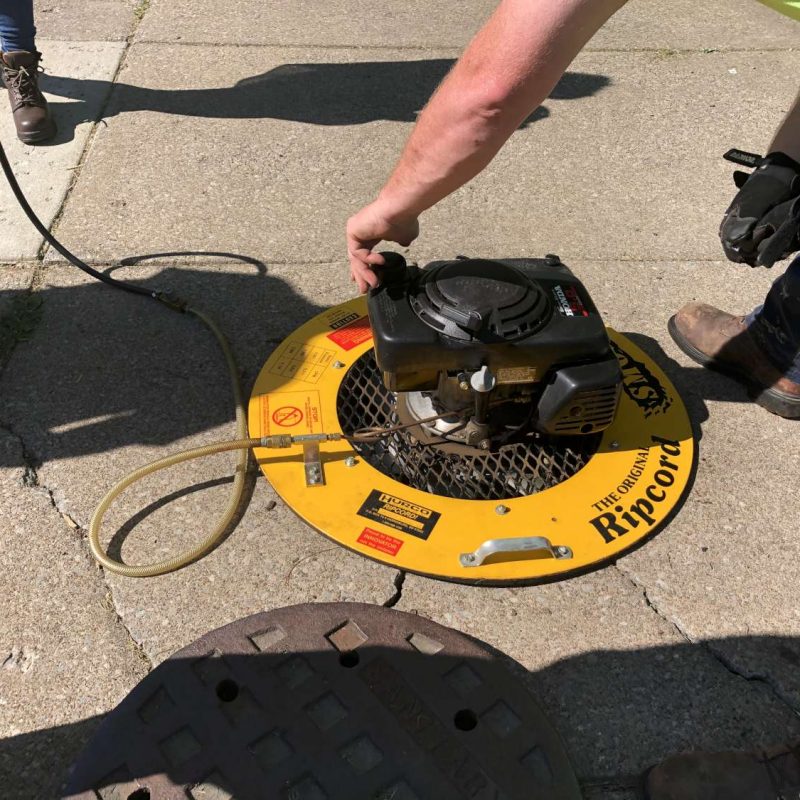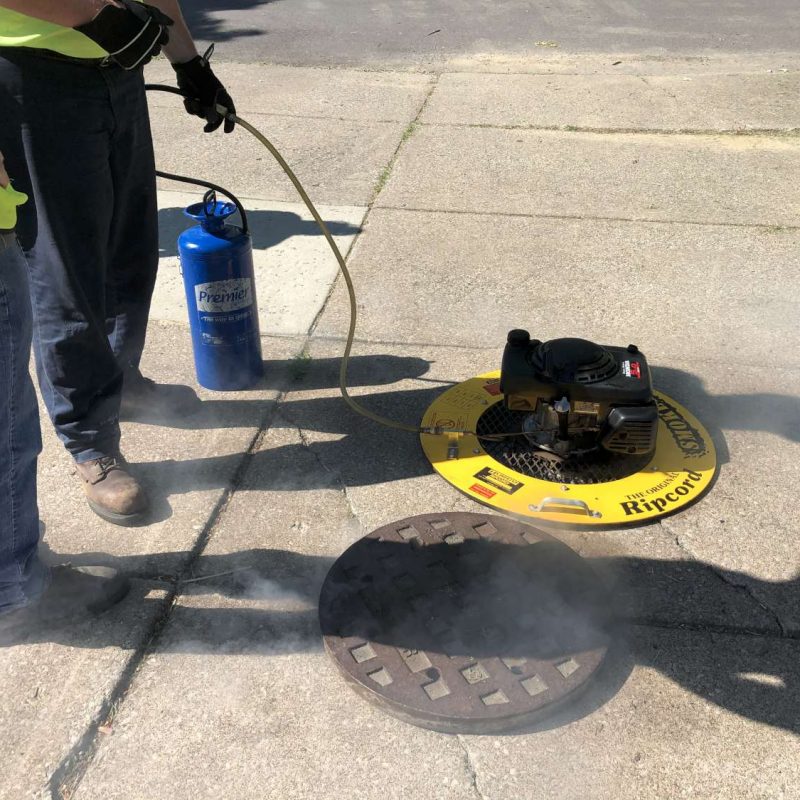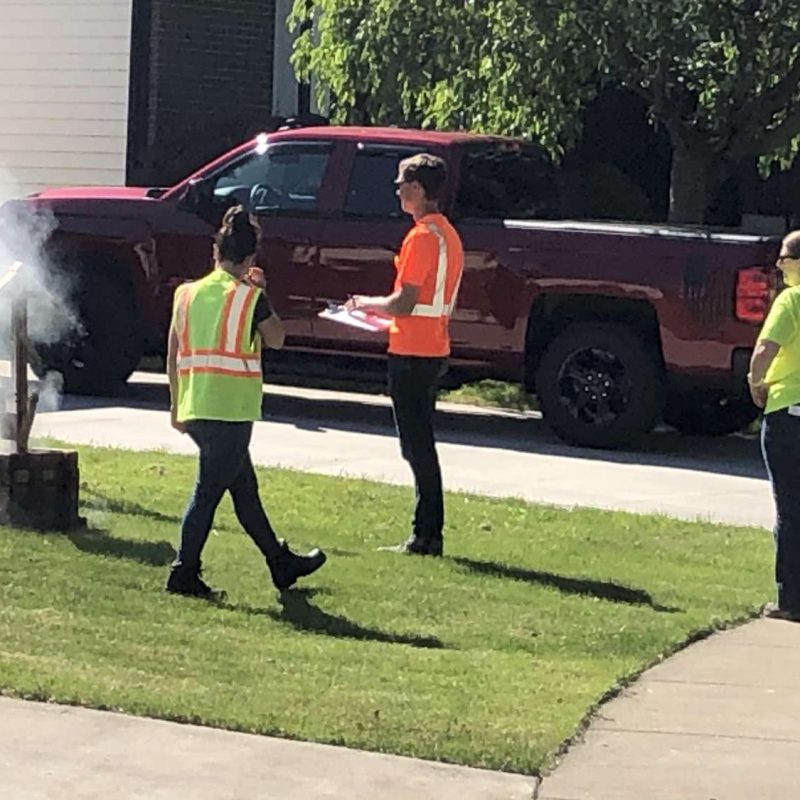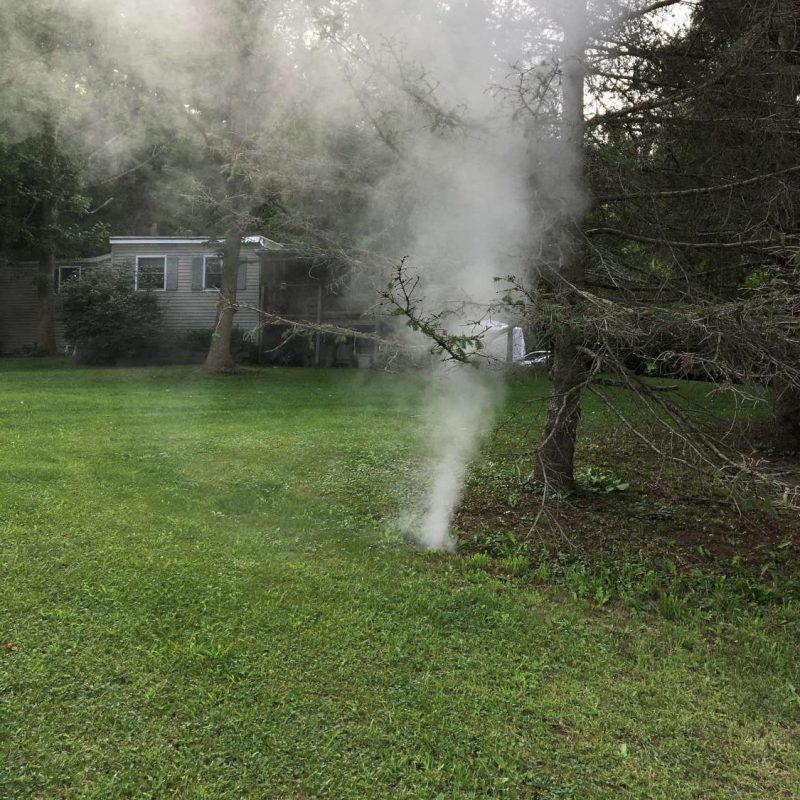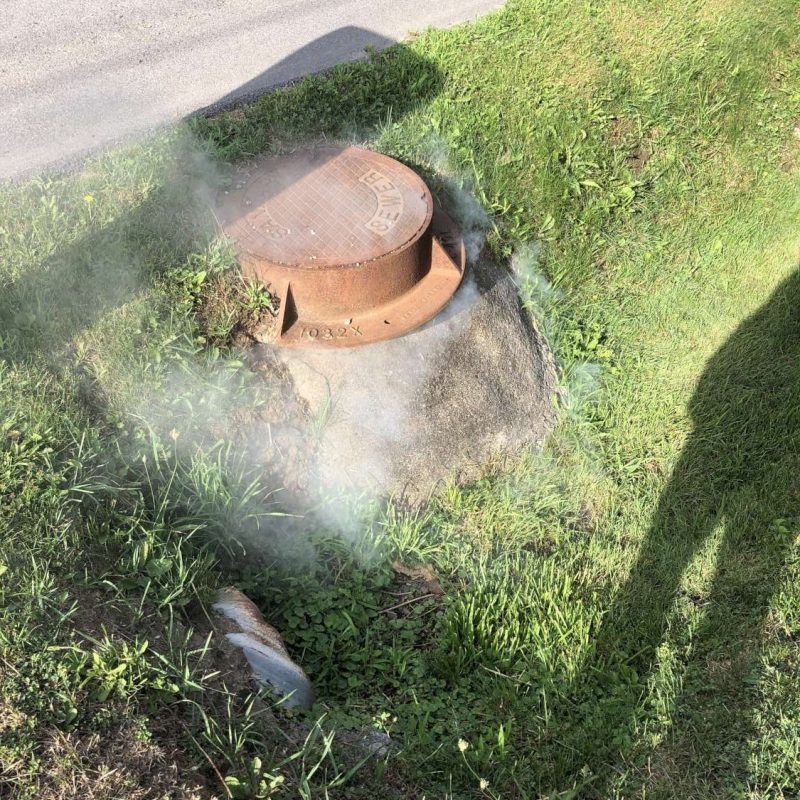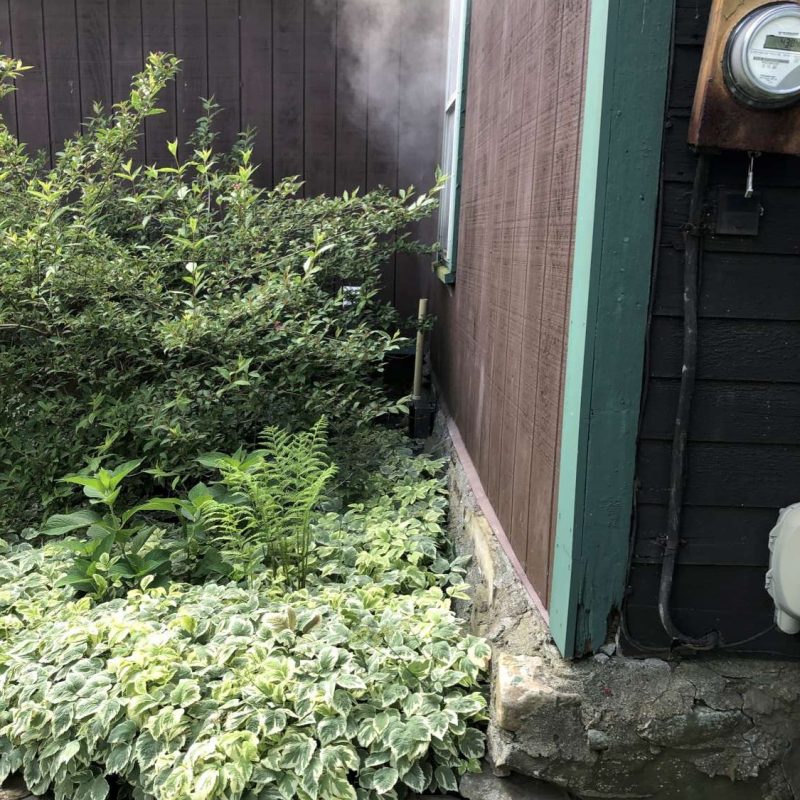Smoke testing is a standard method of detecting defects in the sanitary sewer system. The process involves placing a high capacity blower on top of a sanitary manhole and blowing “smoke” into the sewer system. The smoke will then escape the sewer system through pipe connections, leaks or cracks in the pipes, or low vents in the system.
JM Davidson Engineering, D.P.C. provides smoke testing services on behalf of local municipalities and sewer authorities. During a standard smoke test, you may see field crews in the area opening manholes, walking through the neighborhood – including your yard, taking photographs, and documenting the smoke sightings. Any instances of smoke sightings are recorded and provided to the local municipality or agency in charge of the sewer system. The municipalities/agencies then use this information to plan for sanitary maintenance and improvement projects.e
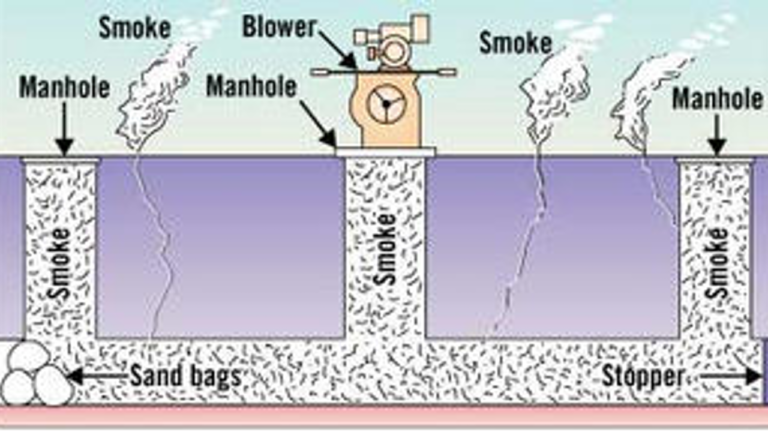
Graphic from Smoke Testing 101: An Introduction to Smoke Testing, Water Technology Online. https://www.watertechonline.com/wastewater/article/16189617/smoke-testing-101-an-introduction-to-smoke-testing
The smoke that is used is non-toxic, non-staining, harmless, white to gray in color, and has no odor. It does not create a fire hazard.
If smoke enters your home during testing, please notify the field crew performing the testing outside. Open windows and doors to allow ventilation of the smoke. Note the location of where the smoke is entering your home. Smoke inside could indicate faulty plumbing or cracked seals. If smoke enters your home, the smoke detector may sound. The smoke will clear quickly once the blower has been turned off.
No, you do not need to be home. Our field crews will not need to enter your home or business. Field crews will be in the neighborhood documenting the smoke with photos and may walk through your property and near your home.
The smoke is not harmful to humans or pets. It may be a good idea to leave a window partially cracked in the event that smoke does enter your home, so that it will dissipate quickly. If you have proper plumbing connections and all of the drain traps have water in them, there should be no smoke entering your home.
Drain traps should always be filled with water to prevent sewer gases from entering your home. However, if you have a seasonal home or other infrequently used drain line such as a basement laundry sink, there is the potential that the drain trap has dried out. It is advisable to pour 1 gallon of water into each floor or sink drain, filling the traps with water to prevent smoke from entering the home. This only needs to be done once prior to the testing. If smoke does enter your home, you should consult a licensed plumber. The smoke could be an indication of faulty plumbing.
Smoke testing is one method of identifying sections of sewer that may have the potential for additional water inflow into the sanitary system during rain events. Runoff and groundwater can enter the system through cracks or leaks in the pipe, loose pipe fittings, storm drain collection system connections, roof downspouts, or foundation drain connections. Excess sources of rainfall inflow to the sewer can overflow the system leading to surcharging manholes or treatment problems at the wastewater treatment plant. Identifying these connections helps the determine the best course of action for sanitary repairs, upgrades, or replacement projects.
If smoke is detected at your property, a report documenting the smoke sighting will be issued to the local municipality / agency that is responsible for your sanitary sewer system. The utility owner may be in contact with you at a later date to discuss potential repairs that may be needed to your sanitary connections. Contact your local utility owner for further information.
Field crews from JM Davidson Engineering, D.P.C. will be wearing high visible safety gear with our logo visible.
Hurco Technologies manufactures the smoke testing equipment being used during this test. You can find further safety documentation, including photos and videos of the smoke testing process at on their website at: https://www.hurcotech.com/ripcord-smoker
